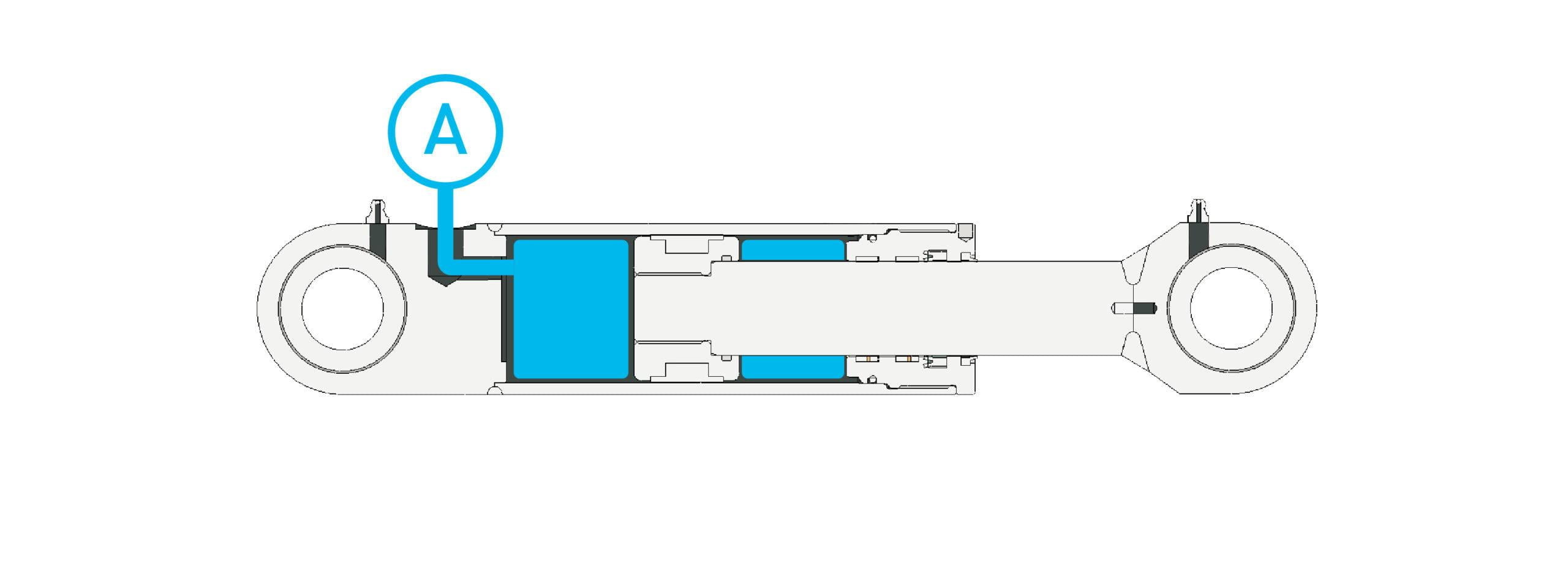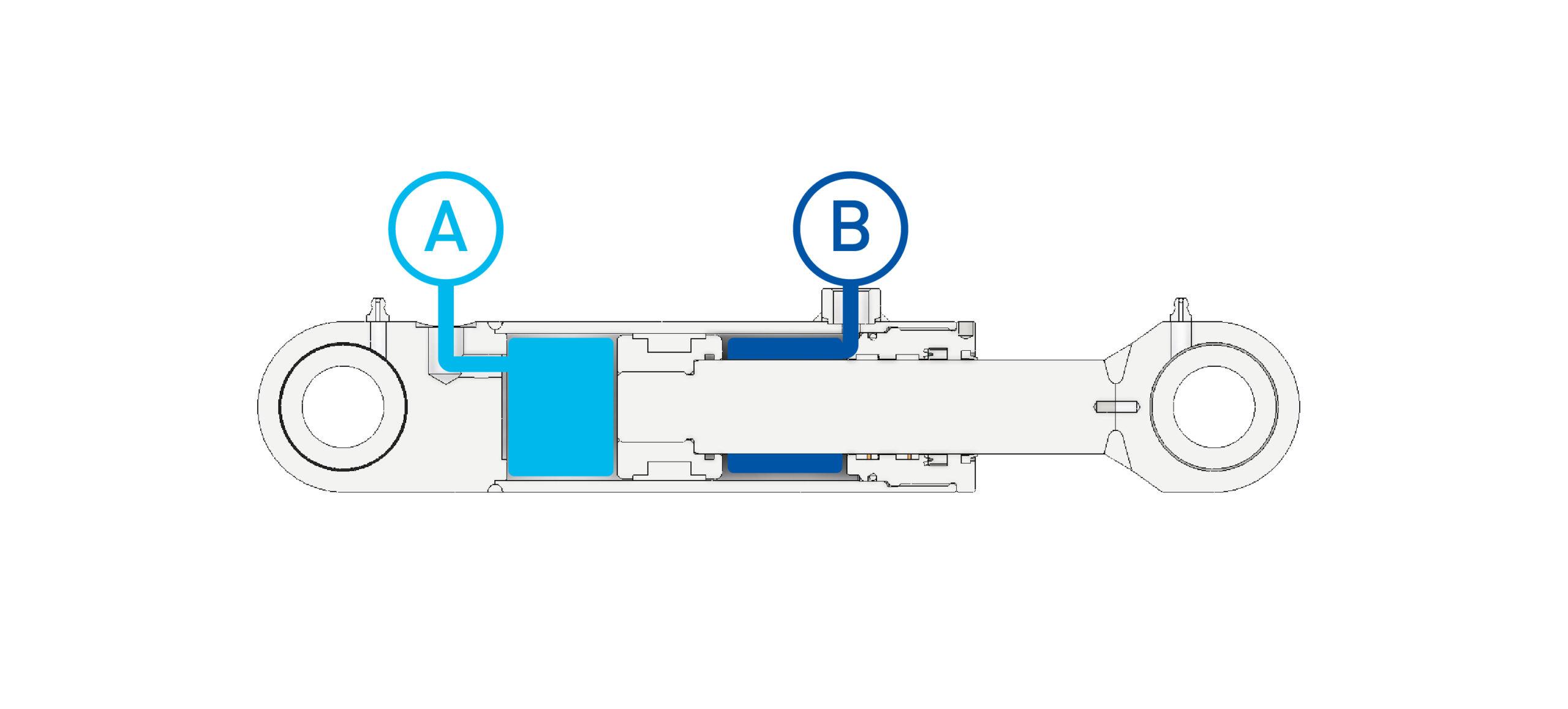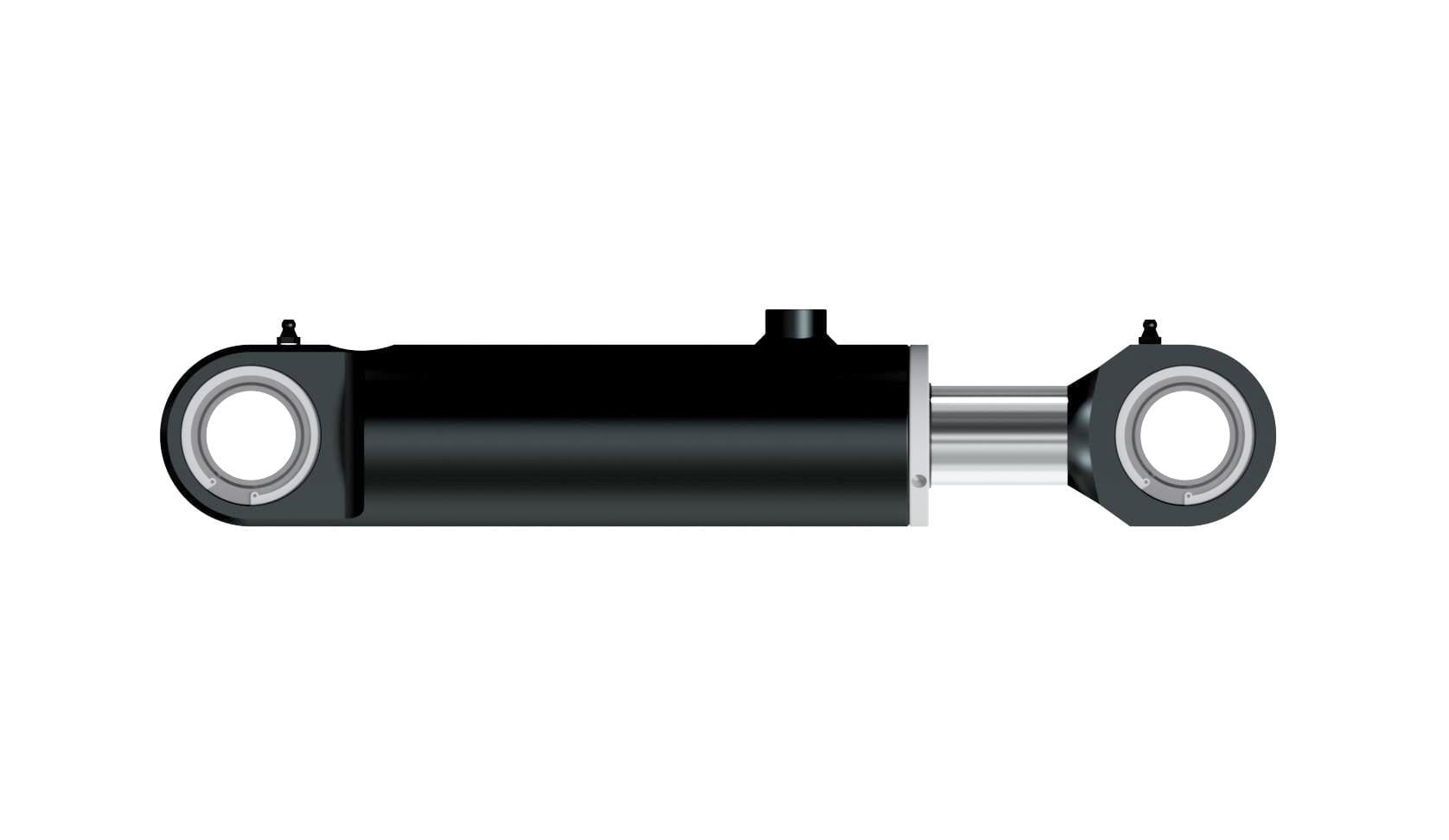What is the difference between single-acting and double-acting cylinders?
As we have mentioned in our previous blogs, there are single-acting and double-acting hydraulic cylinders. What is the difference of them? They work differently and they are used in different kind of applications. It really depends on what you need your cylinder to do in your machine and then you will be able to determine which one to choose. A single-acting cylinder creates force only to one direction; push or pull and a double-acting cylinder to both directions.
A single-acting cylinder is usually known as a “plunger” cylinder. It is commonly used in lifting applications where pressure extends cylinder and mass or other force retracts it. Single acting cylinder usually has only one port for the connection. You can only push or pull with single-acting cylinder. In a one acting cylinder there might not be a piston at all, only a piston rod and the oil pressure effects to the cross area of the piston rod which causes it to move outwards. These can also be used in braking or locking functions with a spring load on the other side. Single-acting cylinders are also found in forklifts and or jacks.
 |  |

Illustrations of a single-acting cylinder.
A double-acting cylinder works in both directions and it has at least two ports. Both chambers are pressurised, so it extends and retracts with pressure. You can push and pull with double-acting cylinder. Double-acting cylinders are used in all kinds of applications where forced linear movement with is needed. Double-acting cylinders are used typical for example, in mobile applications like boom extension, harvester head tilt and steering cylinder.
 |  |


Illustrations of double-acting cylinder
When it comes to designing, a single-acting cylinder is usually more simple to design compared to double-acting cylinder. For example, you need less seals for a single-acting cylinder. Single-acting cylinders don’t usually have separate piston so only some sort of guiding element is required.


